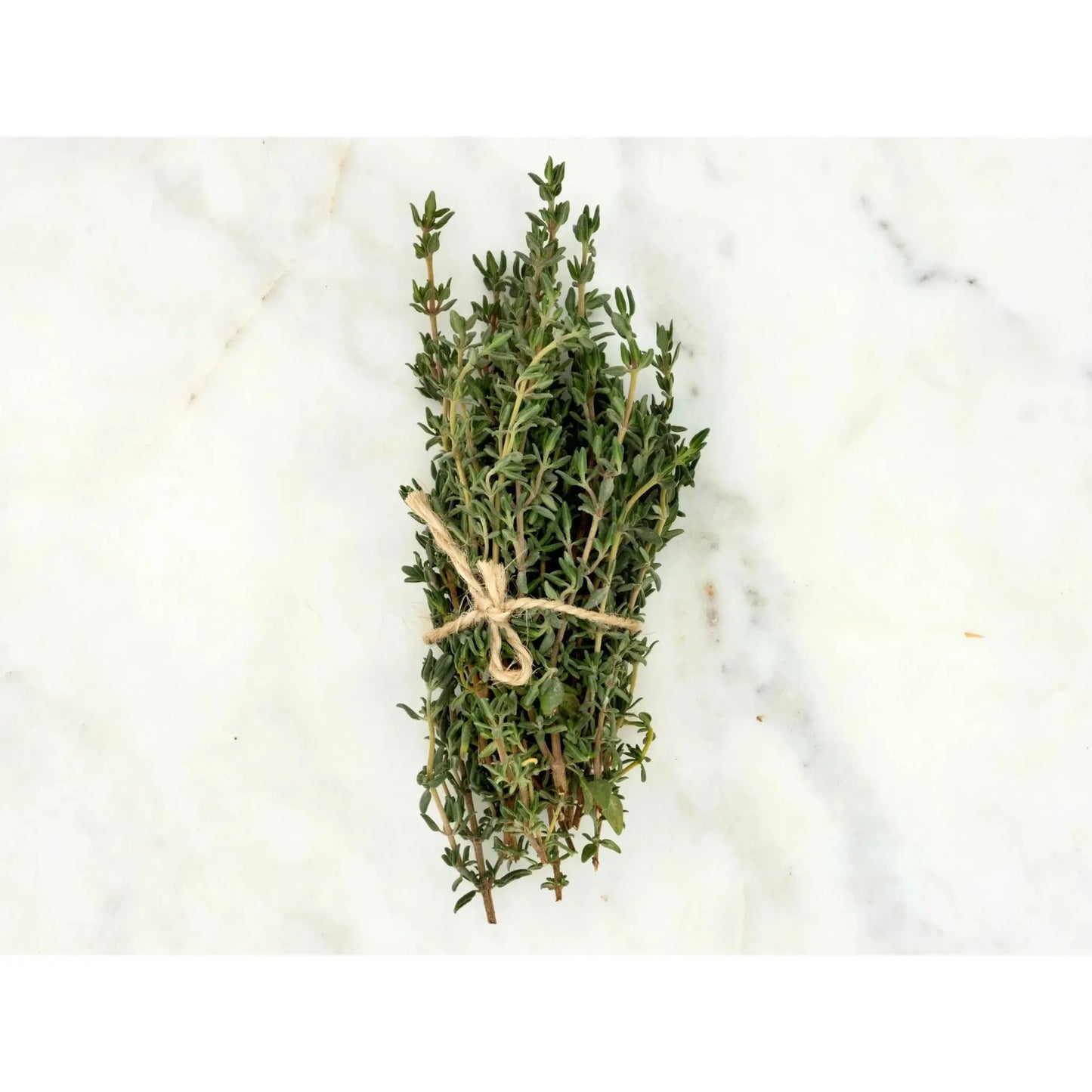Nutrient Farm
Subscription Discounts may be combined with other discounts.
Couldn't load pickup availability
Thyme is a popular herb known for its culinary, medicinal, and ornamental uses. It belongs to the genus Thymus, which is part of the mint family (Lamiaceae). Here are some key aspects of thyme:
Appearance: Thyme is a small perennial shrub with a woody base and square stems. It typically grows to a height of about 6 to 12 inches. The leaves are small, oval-shaped, and usually green, sometimes with a grayish tint. Thyme flowers are tiny, but very aromatic, and can range in color from white to purple.
Flavor and Aroma: Thyme has a distinctive, pungent aroma and a slightly minty, somewhat lemony flavor with a subtle, earthy undertone. This makes it a versatile herb in cooking, suitable for a wide range of dishes.
Culinary Uses: Thyme is a staple herb in many cuisines, especially Mediterranean, Italian, and French. It is used in soups, stews, sauces, marinades, meat, poultry, and vegetable dishes. Thyme retains its flavor well in slow-cooked dishes and is a key ingredient in the classic herb blend Herbes de Provence.
Varieties: There are several varieties of thyme, each with its unique flavor profile. Common thyme (Thymus vulgaris) is most widely used in cooking. Lemon thyme (Thymus citriodorus) has a more pronounced lemon aroma and is great for seafood and poultry.
Medicinal Uses: Historically, thyme has been used for medicinal purposes. It is believed to have antiseptic and antibacterial properties. Thyme oil, extracted from the leaves, is used in natural cough remedies and mouthwashes.
Growing Conditions: Thyme grows well in well-drained soil and full sun. It is drought-tolerant and can thrive in rocky, sandy soils. It's a popular plant in herb gardens, rock gardens, and as a ground cover.
Harvesting and Storage: Thyme is best harvested just before the plant flowers for the highest concentration of essential oils. The leaves can be used fresh or dried. Dried thyme should be stored in an airtight container away from light and heat.
Thyme adds a wonderful flavor to many dishes and is also valued for its aromatic and medicinal qualities. Whether used fresh or dried, it's a herb that's worth having in the kitchen.
Nutrient Farm Herbs are produced with the highest levels of farming stewardship.

